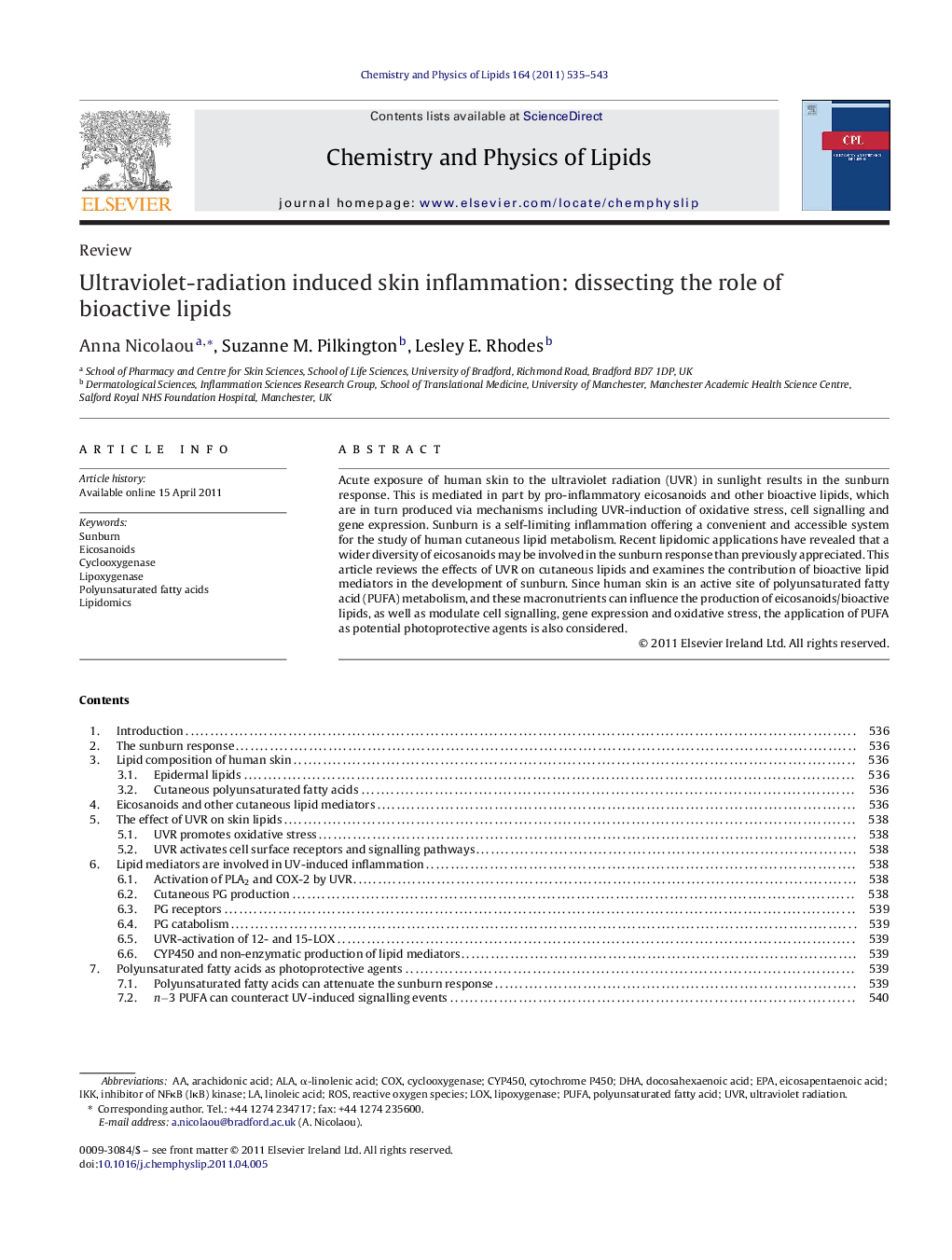| Article ID | Journal | Published Year | Pages | File Type |
|---|---|---|---|---|
| 1253376 | Chemistry and Physics of Lipids | 2011 | 9 Pages |
Acute exposure of human skin to the ultraviolet radiation (UVR) in sunlight results in the sunburn response. This is mediated in part by pro-inflammatory eicosanoids and other bioactive lipids, which are in turn produced via mechanisms including UVR-induction of oxidative stress, cell signalling and gene expression. Sunburn is a self-limiting inflammation offering a convenient and accessible system for the study of human cutaneous lipid metabolism. Recent lipidomic applications have revealed that a wider diversity of eicosanoids may be involved in the sunburn response than previously appreciated. This article reviews the effects of UVR on cutaneous lipids and examines the contribution of bioactive lipid mediators in the development of sunburn. Since human skin is an active site of polyunsaturated fatty acid (PUFA) metabolism, and these macronutrients can influence the production of eicosanoids/bioactive lipids, as well as modulate cell signalling, gene expression and oxidative stress, the application of PUFA as potential photoprotective agents is also considered.
► The sunburn response is mediated in part by pro-inflammatory eicosanoids and other bioactive lipids that are produced via mechanisms including UVR-induction of oxidative stress, cell signalling and gene expression. ► Lipidomic applications have revealed that a wider diversity of eicosanoids may be involved in the development of sunburn than previously appreciated. ► Polyunsaturated fatty acids can influence the production of bioactive lipid mediators, modulate cell signalling and gene expression, therefore, their application as potential photoprotective agents should be considered.
